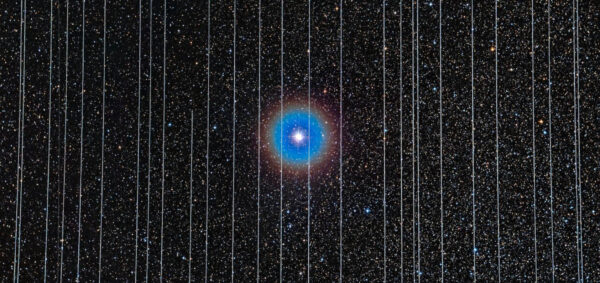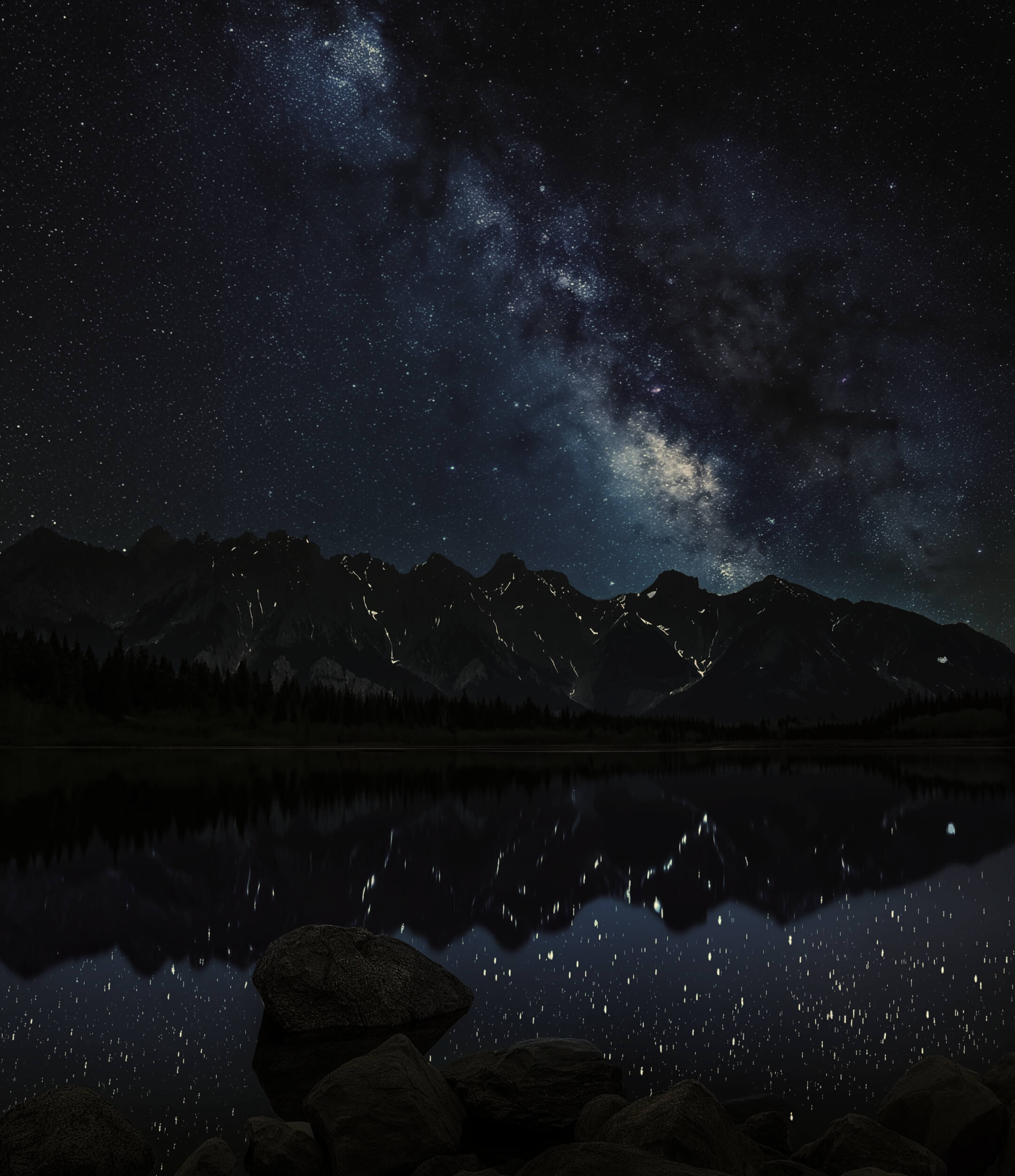Satellite constellations: How they obstruct astronomical observation


Posteado
Cielos Chile
schedule Saturday 25 de November
Space satellites that aim to provide internet to cell phones across the planet could drastically change the night sky. A study by the journal Nature confirmed that satellites like Bluewalker 3 obstruct astronomical observation and generate light pollution, also putting at risk the natural heritage of the skies of northern Chile.
As of May 2023, there are more than eight billion smartphones in the world, so internet coverage for cell phones even in the most remote corners is a growing demand.
Satellite constellations, a threat to astronomical observation
However, this growing connectivity comes with costs. For some time now, the astronomical scientific community has been warning about the impact of satellites on the practice of astronomical observation. A few days ago, the journal Nature published a study where it is confirmed that BlueWalker 3 became one of the 15 brightest objects in the sky.
The brightness of the SpaceMobile company’s satellite is more than an anecdote since the number of satellites in orbit is increasing at a rapid pace since 2019. “Until December 2018, there were about 2,000 active satellites in low orbit. Today that figure has tripled,” says Ángel Otarola, an astronomer at the European Southern Observatory (ESO), who is studying the effect of satellites on astronomical research. “We started to observe these problems only with the advent of the Starlink constellation from the company SpaceX. From that milestone, we began to document their operations and realize how these very bright satellites, at particular times of the day, could eventually affect astronomical activity,” he adds.
The BlueWalker 3 case
The study by the journal Nature, which includes the participation of Chilean researchers and institutions, quantified the brightness of the BlueWalker 3 satellite over 130 days.
The Center for Astronomy (CITEVA) of the University of Antofagasta participated in the study by taking a sequence of images of the satellite using the Ckoirama Observatory: “What we did was coordinate the taking of a sequence of images by quickly moving the telescope to a different point of the satellite’s trajectory at the end of a shot,” explains the center’s director Eduardo Unda-Sanzana.
The astronomers observed not only how the brightness of the satellite changed when its viewing angle changed but also detected unexpected space debris generated by the launch. The images, Unda-Sanzana indicates, revealed the separation of the satellite from its adapter for the launch vehicle. This second body also had significant brightness and was not reported in databases of bodies in orbit for several days.
“The issue of satellite constellations is quite delicate and concerning, and unfortunately does not have the level of visibility it deserves,” explains Catalina Flores, an astronomer and PhD candidate in Astrophysics at the Andrés Bello University, and who is part of the CLEOsat group (Chilean Low-Earth Orbit Satellites Group); which participated in the editing of the study.
The researcher explains that, in astronomy, the sky is studied using various wavelengths to understand different phenomena. A satellite that “crosses” the field of view of an astronomical observation interferes with the measurements. Thus hindering all the scientific work behind it. “Observations made from the ground are threatened by large telecommunications satellites like Bluewalker 3, both due to their very high levels of brightness (their high reflectivity of sunlight directly affects observations made in optical wavelengths), and the frequencies at which they operate (radio waves, also used in radio astronomy observations),” she indicates.
For his part, Unda-Sanzana adds that it is a concerning situation. “Four years have passed since Elon Musk’s announcement regarding the Starlink constellation, and since then 18 different satellite constellations have been announced, around 5,000 satellites are already in orbit, and more than 500,000 have been announced,” he states.
New technologies, like Bluewalker 3, always bring costs and benefits, affirms the researcher from the University of Antofagasta. However, they are being carried out without weighing their profound consequences. “Progress is perfectly possible with effective environmental care, “let’s not fall into the false dichotomy of believing that choosing one is to renounce the other,” warns Unda-Sanzana.
Regulation, a pending task
In this context, of threats to the night skies, the international astronomical community is quickly organizing to face the challenge of satellite constellation pollution.
In 2019, astronomical associations were alerted about the impact of satellites on observations and measures began to be taken to measure and study their brightness. Additionally, research is emerging to make the materiality of satellites in orbit reflect less light.
“Once we as astronomers made the first observations of the Starlink satellites, the same company, SpaceX, decided to invest in research to mitigate this problem. They generated a first satellite called DarkSat or Dark Satellite which consisted of applying darker aluminum sheets. That helped, but it was not enough. We needed the brightness of the satellites to be reduced five times so that they were not visible to the human eye,” explains Ángel Otarola, an astronomer at ESO.
But most importantly, Otarola indicates, is the coordinated effort between astronomers, international observatories, governments, companies, and the international community to establish a regulatory framework for satellite activity. “At this moment this field is very poorly regulated and it is precisely one of the points that most motivates me in this area of research to monitor satellites; determine how bright they are, in what ways they affect different astronomical activities and how it needs to be regulated,” adds the astronomer.
In Chile, Dr. Jeremy Tregloan-Reed, a professor at the University of Atacama, has generated, says Eduardo Unda-Sanzana, an example of teamwork with the creation of the CLEOsat group, which brings together researchers from universities, observatories, and other organizations, to address this challenging issue.
The Chilean astronomical community has positioned itself as an international reference in the study of sources of space light pollution. “This work connects and establishes synergies with the efforts made by the Government, through the Ministry of Foreign Affairs, as well as SOCHIAS and the Cielos de Chile Foundation,” concludes Unda-Sanzana.

Subscribe to our newsletter
Receive relevant information about the skies of Chile every month
